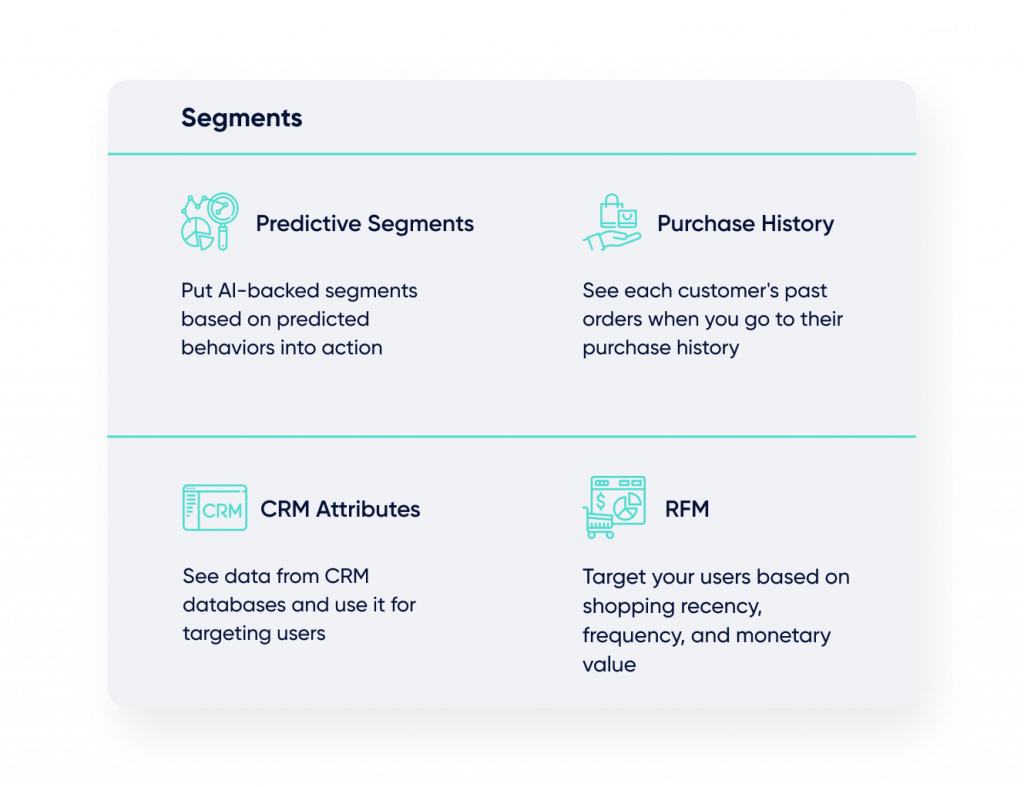Segmentation
Segmentation is the process of dividing potential customers into groups based on similar interests or characteristics. It helps marketers better understand their customers and adapt their messages accordingly.
What is segmentation in marketing?
Segmentation in marketing refers to the practice of dividing a larger target market into smaller groups or segments based on specific characteristics, traits, or behaviors.
Segmentation aims to help marketers understand and cater to the diverse needs, preferences, and behaviors of different customer groups. By tailoring marketing strategies and messages to each segment, businesses can increase the effectiveness of their campaigns and optimize their resources.
What is market segmentation?
Market segmentation also involves categorizing a broad market into smaller, more manageable segments. However, these segments are defined by common attributes that influence consumer behavior rather than the behaviors themself.
For example, a cosmetics company such as MAC Cosmetics might segment its market into groups based on age, skin type, and preferred makeup styles. This allows them to create products and marketing strategies that cater to each segment’s unique needs.
What is customer segmentation?
Customer segmentation is a subset of market segmentation, focusing specifically on categorizing consumers based on their behaviors, preferences, and characteristics. It delves into understanding individual customers on a deeper level, allowing businesses to offer personalized experiences and targeted promotions. Customer segmentation might include:
- Demographic segmentation: Dividing the market based on demographic factors such as age, gender, income, education, occupation, and family size.
- Psychographic segmentation: Categorizing customers based on lifestyle, values, attitudes, interests, and personality traits.
- Behavioral segmentation: Dividing customers based on their purchasing behaviors, usage patterns, brand loyalty, and other actions they take as consumers.
- Geographic segmentation: Segmenting the market by geographical factors such as location, climate, culture, and regional preferences.
- Occasion-based segmentation: Considering the occasions or situations when customers are likely to purchase, such as holidays or special events.

Why is segmentation important?
If you want to target customers and hit business goals, you need to segment your customers. Every customer has different needs, and delivering relevant content based on this is your key to driving conversions and boosting loyalty.
Here are several reasons to segment your customers:
- Personalized marketing
By understanding the distinct needs and preferences of different segments, businesses can tailor their marketing messages and product offerings to resonate more effectively.
- Enhanced efficiency
Segmentation enables companies to allocate resources more efficiently by directing them toward the segments that are most likely to respond positively. This avoids wasting resources on uninterested or irrelevant audiences.
- Competitive edge
In a crowded marketplace, businesses that demonstrate a thorough understanding of their customers through targeted marketing stand out from the competition. In fact 73% of customers want personalized recommendations—those not doing so risk falling behind.
- Stronger communication:
When marketing messages are tailored to specific segments, communication becomes more relevant and relatable, fostering a stronger connection between the brand and its customers.
How to do segmentation?
Now you’ve realized just how important segmentation is, it’s time to invest in a segmentation tool so you can carry out the following steps as quickly and accurately as possible.
- Collect data: Use a customer data platform to collect and gather data in one place. Segmentation is most effective when you don’t have data siloes and can rely on behaviors from real touchpoints..
- Identify segments: Analyze the collected data to identify commonalities among consumers. These commonalities can be demographic (age, gender, location), psychographic (lifestyle, values), or behavioral (purchase habits, brand interactions).
- Create profiles: Develop detailed profiles for each segment, outlining their traits, behaviors, and preferences. This will guide your marketing strategies.
- Prioritize segments: Determine which segments are most valuable and align with your business goals. Some segments may have more growth potential or higher profit margins.
- Tailor marketing efforts: Craft targeted cross-channel campaigns, content, and product offerings that address each segment’s specific needs and interests.
- Test and refine: Monitor the effectiveness of your marketing campaigns by tracking metrics such as engagement, conversion rates, and sales. Refine your strategies based on the results.
Ready to get started with segmentation? Insider offers over 120+ attributes so you can build the most effective segments for your business goals. Get started today with a quick demo.











